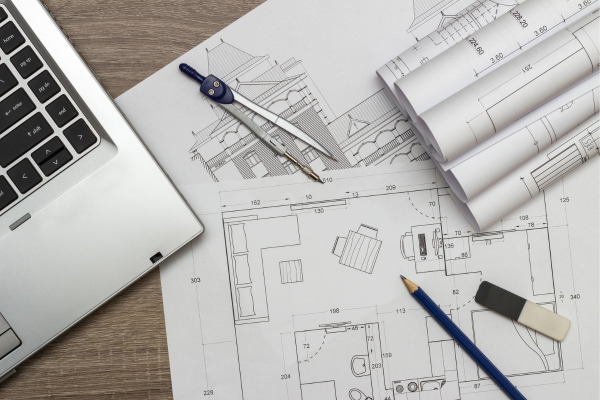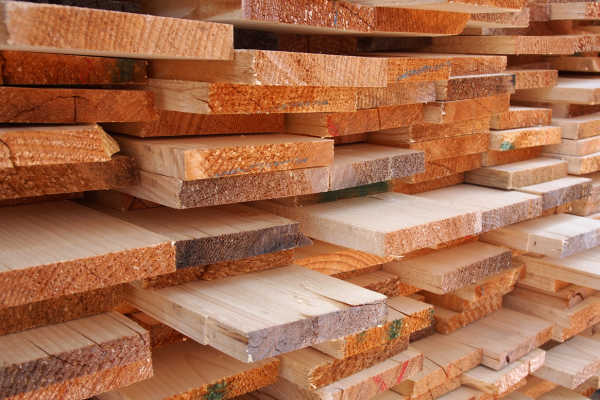.png)
Cross-Laminated Timber (CLT): Revolutionizing Modern Architecture
The canvas of modern architecture and construction is vibrant, with innovations continually adding color and depth. Yet, among these myriad shades, Cross-Laminated Timber (CLT) stands out with its brilliance. More than just a modern twist on ancient material, CLT is a testament to how we can harmoniously marry nature with contemporary design demands. Beyond its rich, organic textures and undeniable strength, CLT offers a sustainable solution for a world grappling with environmental concerns. This isn't merely about using wood in our structures; it's about a transformative approach to building that champions efficiency, aesthetic elegance, and ecological harmony. As we delve deeper, we'll uncover the layers behind CLT's rise, its significance in today's construction landscape, and its promise for our architectural future.
What is Cross-Laminated Timber (CLT)?
Cross-laminated timber, often called CLT, is a modern and innovative wood panel product gaining traction in construction and architecture. In essence, CLT is engineered wood designed to provide improved strength and stability compared to traditional lumber products.
Multiple layers of timber are stacked atop one another to construct CLT, with each layer positioned perpendicular to the preceding one. This cross-layering technique enhances the wood's natural strength. Each layer is bound together using strong, environmentally friendly adhesives under high-pressure conditions, creating large, robust panels.
The result is a composite wooden material that boasts impressive strength, dimensional stability, and a host of other attributes that make it comparable, and in some cases superior, to traditional construction materials like concrete and steel. Its multi-layered composition helps it resist forces from various directions, making it especially valuable for structural applications.
Moreover, CLT's prefabrication ensures precise measurements, enabling efficient and rapid construction on-site. Its versatility and adaptability make it a favorable choice for architects and builders looking to combine the organic aesthetics of wood with the durability and resilience required for modern structures.
The Rise of Cross-Laminated Timber
Amidst the evolution of architectural materials, Cross-Laminated Timber, or CLT, is making waves, charting an ascendant path that captures the attention of builders, architects, and environmentalists alike.
Historically, wood has been cherished in construction, providing shelter and warmth. But with advancements in technology and engineering, CLT has transformed this ancient material into a contemporary marvel. Comprising multiple layers of timber boards stacked perpendicularly and bonded, CLT brings a unique combination of rigidity, strength, and dimensional stability. This cross-layering technique enhances the wood's innate resilience, allowing it to compete and surpass traditional construction materials like concrete and steel in specific applications.
But what catalyzed the meteoric rise of CLT? It's a symphony of benefits, harmonizing each note to create a compelling case for this material. CLT stands at the nexus of environmental sustainability, design versatility, and construction efficiency, resonating with the needs and aspirations of the modern world.
Furthermore, CLT finds itself in the spotlight as global consciousness shifts towards sustainability and green building practices. Its carbon-sequestering properties and the potential for reduced greenhouse gas emissions during production answer pressing environmental concerns.
From modest beginnings to the heart of innovative construction, CLT's journey represents a convergence of tradition and technology. Its rise is not just the story of material but a testament to human ingenuity, adaptability, and our undying relationship with the natural world.
A Friend to Mother Earth
In our ceaseless quest to design and construct, it's vital to remember the planet that houses us. Sustainable practices are no longer a luxury but a necessity, and in this eco-conscious era, Cross-Laminated Timber (CLT) shines as a beacon of environmental responsibility.
Timber, by its very nature, is renewable. As they grow, trees act as carbon sinks, absorbing and storing carbon dioxide from the atmosphere and storing it. When this timber is transformed into CLT and used in construction, that held carbon remains locked away, turning buildings into long-term storage vessels for greenhouse gases. This unique ability positions CLT as a powerful tool in the fight against climate change, offering a tangible way to offset carbon emissions.
However, CLT's commitment to Mother Earth goes beyond carbon storage. Producing CLT is intrinsically more energy-efficient than the manufacturing methods for steel or concrete. Reduced energy consumption means fewer greenhouse gas emissions, further underscoring CLT's eco-friendly credentials.
It's also noteworthy that many CLT producers source their timber from sustainably managed forests. These forests are carefully tended to ensure tree harvesting doesn't outpace growth, maintaining a balanced ecosystem and continuous carbon absorption.
In a world grappling with environmental challenges, choosing materials that echo the rhythms of nature becomes paramount. CLT answers this call, providing a pathway to architectural excellence that walks hand in hand with ecological stewardship. It's a material that serves our immediate needs and pays homage to the planet that nurtures us, exemplifying a harmonious blend of progress and preservation.

Unleashing Architectural Creativity
When architects embark on the creative journey of designing a structure, they seek materials that meet functional requirements and offer the freedom to bring their vision to life. Cross-laminated timber (CLT) is emerging as a muse for these creators, beckoning them into an expansive world of architectural possibilities.
At the crossroads of strength and flexibility, CLT stands distinct. Despite its inherent robustness, this timber material presents a degree of malleability that invites architects to think outside the box. Whether it's crafting sweeping curves, bold overhangs, or intricate patterns, CLT becomes the canvas on which architectural dreams are painted.
Beyond its structural flexibility, CLT's inherent aesthetic appeal amplifies its allure. Wood's rich grains and textures naturally infuse spaces with warmth and a sense of organic harmony. Whether left exposed or complemented with other materials, the visual charm of CLT ensures that buildings aren't just structurally sound but also visually captivating.
Yet, the creativity spurred by CLT is open to more than just the macro level of grand designs. On a granular level, the material offers unique opportunities. Architects can choose from different wood species, each with its hue and pattern, allowing them to play with color and contrast in their designs.
As the architectural world continues to evolve, materials like CLT propel it forward, bridging the gap between nature and design. The result? Structures that aren't merely buildings but are artistic expressions harmoniously woven into the tapestry of their surroundings. In the hands of imaginative architects, CLT isn't just wood—it's a symphony of creativity and innovation.

Speed, Efficiency, and the Modern Builder
In an era where timelines are tight, and efficiency is paramount, CLT offers a promising avenue for the construction industry. This innovative material streamlines the building process in several ways, ensuring projects stay on track without sacrificing quality.
First and foremost, the prefabrication of CLT panels is a game-changer. These panels are meticulously crafted off-site in controlled environments, ensuring precision and quality. Once ready, they're transported to the construction site, primed for quick assembly. This process drastically minimizes the time traditionally required for on-site construction, resulting in faster project completions and significant cost savings.
Beyond the boon of rapid assembly, CLT's precision-manufactured panels reduce the margin for error. Even minor mistakes can result in substantial delays and unforeseen expenses in the intricate dance of construction. With CLT, builders are equipped with components that fit seamlessly, reducing the chances of on-site adjustments and rework.
But, the benefits of CLT continue beyond speed and precision. Safety—a paramount concern in the construction industry—also gets a boost. Given that much heavy-duty construction happens off-site, the on-site assembly of CLT structures often involves fewer risks. This leads to safer construction environments, fewer accidents, and a more streamlined building process overall.
In sum, Cross-Laminated Timber is proving to be more than just an eco-friendly material choice. For the modern builder, it represents a fusion of age-old craftsmanship with contemporary efficiency, promising a future where construction is faster, safer, and more efficient than ever before.
Looking Forward: The Timber Wave of the Future
While Europe has been at the forefront of the CLT movement, the United States is catching up, with cities like Portland and New York leading the charge. As more architectural firms, construction companies, and developers recognize the manifold advantages of CLT, we can expect an increase in its adoption.
But beyond the metrics and statistics, there's a narrative woven into every CLT panel's grain. It's a story of reconnecting with nature, of innovation that honors tradition, and of a future where our buildings reflect a harmonious blend of form, function, and responsibility.
In the grand tapestry of modern architecture, Cross-Laminated Timber isn't just a material; it's a message. A message that whispers of sustainable forests, speaks of designs unshackled by convention and loudly proclaims a commitment to a greener, more thoughtful tomorrow.
As we stand at this crossroads of architectural evolution, it's worth reflecting on the profound impact of our choices. CLT challenges us to think differently, build responsibly, and create spaces that resonate with the environment and the human spirit. The future is timbered, and it's looking brighter than ever.
🔍 Why Guess When You Can Know? Turn your BIM models into precise estimates with BidLight.
Click here to see it in action ➡️ www.bidlight.com
